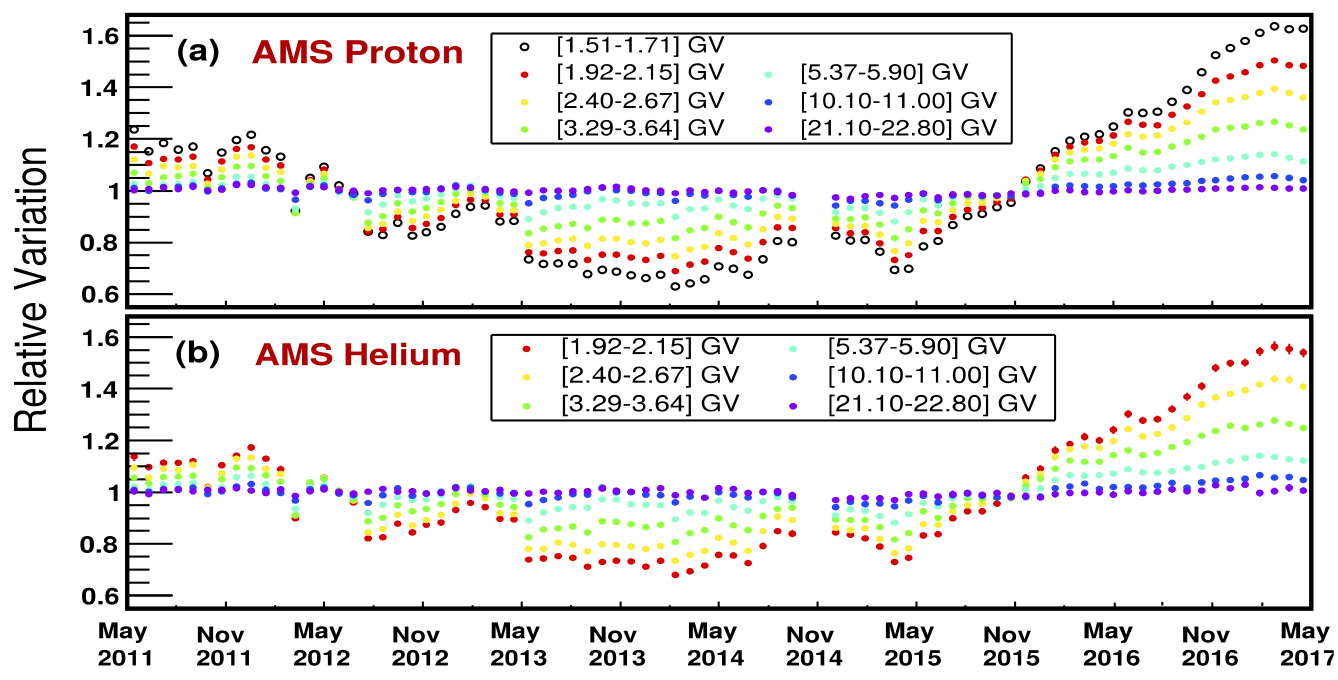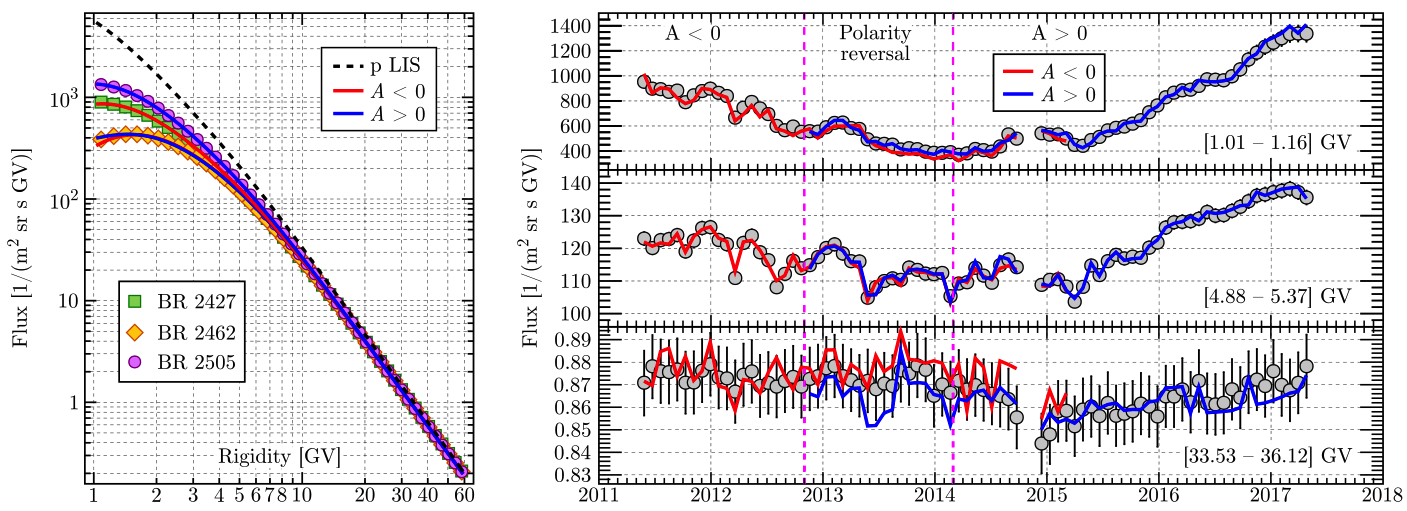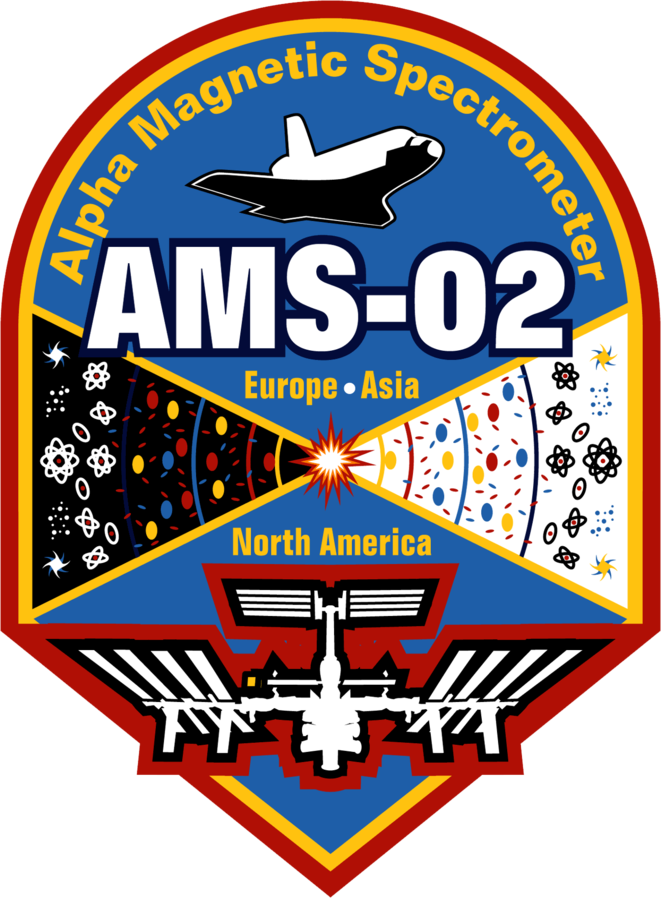21.29835385, -157.8158454
The AMS-02 group at University of Hawaii at Manoa has two sub-groups, one lead by lead by Professor Veronica Bindi, which specializes in the study of heliophysics and space radiation, supported by multiple grants from NASA and NSF and the other lead by Professor Philip von Doetinchem which specializes in the measurement of anti-deuterons in cosmic rays.
Professor Bindi’s group
AMS data analysis efforts
Our group plays a major role in the data analysis on the time variation of nuclei fluxes in galactic cosmic rays, both on long- and short-term scales. The first results on the precise measurement of monthly proton and helium fluxes have been published on Physical Review Letters in 2018.

The Sun is continuously emitting a stream of charged particles, called solar wind, which carves out a bubble in the local interstellar space, the heliosphere.
Galactic cosmic rays entering the heliosphere interact with the turbulent magnetic field embedded in the solar wind, so that when they finally reach AMS their energy spectrum is considerably distorted with respect to the one in interstellar space.
The solar wind and the magnetic field vary in time according to the solar activity intensity, whose trademark sign are the Sun spots, dark regions on the solar surface easily observed from Earth.
The study of monthly fluxes of protons, helium, carbon, and oxygen leads to a better understanding of the solar modulation of cosmic rays, providing a way to test different models of particle diffusion in the heliosphere and their dependence on particle species (see, e.g., Corti et al, The Astrophysical Journal, 2019).
Daily proton and helium fluxes are affected by propagating solar wind disturbances, and their study yields a detailed picture of the transport of cosmic rays in the inner heliosphere. The analysis of proton and helium solar energetic particle events is fundamental for improving our knowledge of different acceleration mechanisms of charged particles at the Sun, with the aim of further our capability of forecasting space weather events that can negatively affect the presence of human and electronic components in space.
AMS detector support
Our group contributes to numerous AMS shifts at CERN (lead, data transfer, ECAL, TOF, RICH, and thermal control). In addition to the AMS POCCs at CERN and in Taiwan, a new control room is being built in Honolulu: our group will cover thermal shifts and will monitor in real time the solar activity using data from AMS and other spacecraft.
Modeling, theoretical interpretation, and other research
We work on numerical modeling of galactic cosmic ray transport in the heliosphere, and correlation studies of AMS data with neutron monitors and various NASA spacecraft.

We also collaborate with the Space Radiation Analysis Group at Johnson Space Center to improve models that predict radiation doses absorbed by astronauts for both ISS operations and other long-duration human spaceflight missions.

International collaborations
Professor Bindi's group is the organizer of the workshop “Solar Energetic Particles, Solar Modulation and Space Radiation: New Opportunities in the AMS-02 Era”.
The workshop aims to bring together experts in the field of cosmic rays and solar energetic particles, with an additional focus on their propagation inside the heliosphere and their inter- action with the magnetosphere.
The communities of heliophysics, cosmic rays and space radiation typically have separate meetings, and this workshop brings together participants with common research goals.
During the past three editions, the talks presented the most recent results related to solar energetic particles, solar modulation, space radiation and related phenomena.
Outreach and public education activities
In addition to our research work, the team also dedicates significant time to outreach and education. Working with schools in Hawaii, we are developing high school curricula and providing opportunities for students to engage with science through real world applications. Current projects include incorporating engineering, math, astronomy, and arts to determine the best time to send astronauts to Mars, and a practical project: building a particle detector from everyday components such as webcams.
